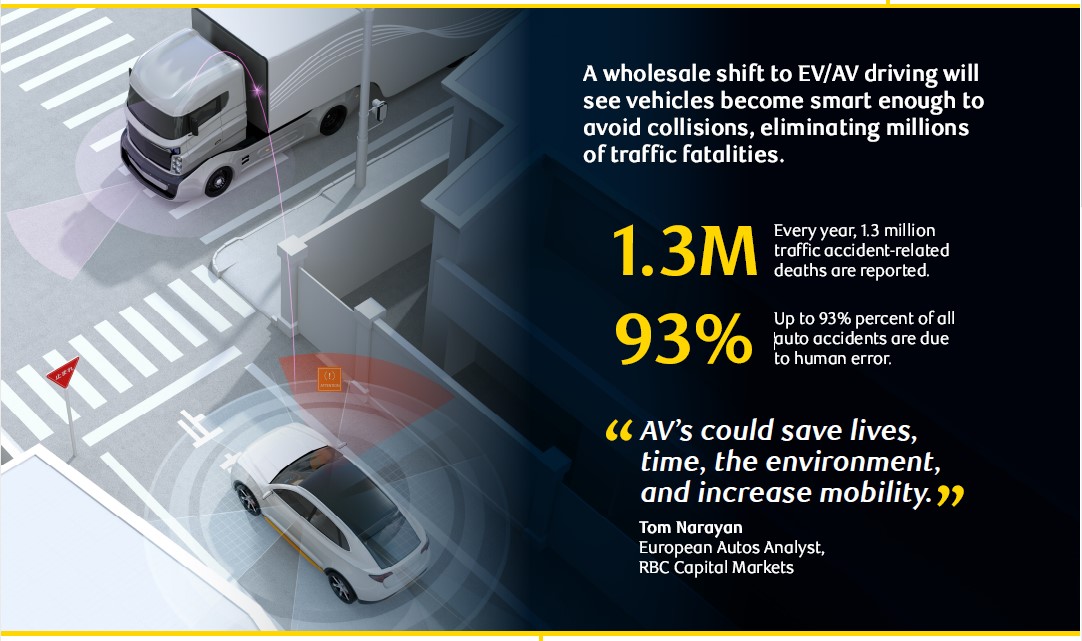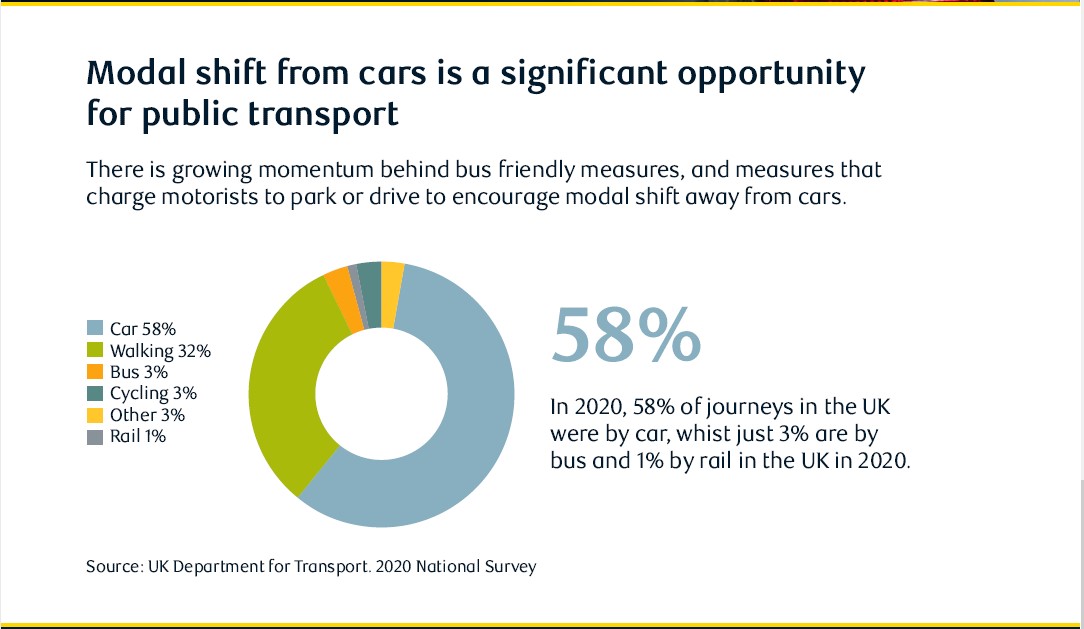Published January 17, 2023 | 3 min watch
Key Points
- Autonomous vehicles (AVs), and their robotaxi applications in particular, have the potential to save millions of lives, increase mobility, and speed the energy transition.
- Commercial trucking AVs should be on the road by the mid-2020s, with robotaxis reaching a tipping-point in cities around a decade later.
- Premium car-makers are best placed to benefit, but auto manufacturers as a whole should be able to compensate for lost sales by acting as service providers.
- Public transport might see increased usage even while losing share to robotaxis, while reduced need for car parks will trigger shifts in real estate.
The robotaxi is on its way. It will take us places in a more efficient and environmentally-friendly fashion than a private car – and at a lower cost. In the process, it will bring about dramatic changes in the way we live, while disrupting a range of industries.
Our research explores the knock-on effects of the autonomous vehicle (AV) revolution – and they are overwhelmingly positive.
Safety, mobility, sustainability
AVs could save millions of lives. Every year, traffic accidents kill 1.35m people globally. Over 93% of them are caused by human error, according to the World Health Organization. AVs should deliver meaningful reductions in accidents and fatalities.

By offering a direct transport option, they should also increase mobility for millions of non-drivers, notably people with disabilities, older people and children.
AVs could also give us the gift of time. The same WHO study calculated that AVs could save as much as 50 minutes per day for commuters. Rather than inching through traffic congestion at peak times, people could spend these reclaimed minutes working, relaxing or enjoying entertainment.
By drastically reducing the need for car parking, AVs could also open up huge amounts of space, especially in cities. This offers potential to make housing and real estate more affordable.
Perhaps most critically, AVs will accelerate electrification and contribute to a more sustainable future. We calculate that one robotaxi could eliminate the need for five private cars. This should spell the end of the internal combustion engine on our roads.
Timeline and practicalities
Autonomous passenger cabs may not pull up in significant numbers for a little while: we expect a mass market in cities by the late 2030s. The timeline for urban robotaxis will depend on economic viability and infrastructure development.
But trucks will be using the technology much sooner. Driverless applications should be ready for hub-to-hub use in commercial trucking by 2025.
Regulatory hurdles remain, especially in Europe. However, we expect these concerns can be alleviated once manufacturers accept liability. The inclusion of multiple cameras and sensors in AVs should make this process easier, by helping to identify fault in any accident.
Options for the auto industry
In a robotaxi future, we expect premium car owners will still want their own private car. That means premium car-makers should be better positioned, especially those with luxury offerings. Private AVs could become a living-room, bedroom, gym, or office on wheels.
Non-premium car-makers will be more exposed to a reduction in car ownership. As in the smartphone model, however, car-makers will ultimately control what applications are used in vehicles. Some will look to provide end-to-end robotaxi services – making the car and software as well as operating the fleet. Others are likely to partner with specialists.
Either way, we expect car-makers could more than offset lost sales through opportunities triggered by the overall increase in mobility services offered by AV.
Tiremakers could benefit: robotaxis are likely to increase miles driven. And commercial trucks should see revenue rise, since AVs will be able to drive 24 hours a day without driver costs.
Domino effects
Robotaxis could take some share from public transport, since they will be direct and potentially much cheaper than cabs. However, they are also likely to trigger a reduction in car ownership, which could boost public transit use.

While reduced accidents will lower insurance premiums, other factors may push in the opposite direction. Vehicles will be more complex and costlier to repair or replace, while product liability and cybersecurity risks introduce new elements for insurance providers.
There are also implications for real estate. The rise of AVs will lead to less demand for car parking spaces, particularly in cities. This would increase the supply of land for other uses, such as housing and commercial property. More efficient commuting could also shift property trends – for instance, by increasing workers’ willingness to live further from their offices.
Our RBC Imagine™ research program identifies five major themes for understanding future trends. AV will have big impacts in four of them. We believe it has the potential to transform society more than anything else in our lifetimes.

